stories, novellas, novels
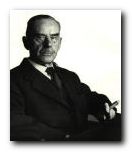 Thomas Mann’s work spans the first half of the twentieth century. He started out writing in the tradition style of the nineteenth centry, but very quickly sought out themes and motifs which place him amongst modernists. His political views went through a similar transformation, from arch conservative before and during the first world war, to a very sceptical liberal democracy after the second. Many of his works are long and dense, and his style includes such typically Germanic features of writing in huge paragraphs, with lots of philosophic meditation embedded in his narratives. Beginners are best advised to sart with his earlier work – particularly novellas such as Death in Venice and Tonio Kroger
Thomas Mann’s work spans the first half of the twentieth century. He started out writing in the tradition style of the nineteenth centry, but very quickly sought out themes and motifs which place him amongst modernists. His political views went through a similar transformation, from arch conservative before and during the first world war, to a very sceptical liberal democracy after the second. Many of his works are long and dense, and his style includes such typically Germanic features of writing in huge paragraphs, with lots of philosophic meditation embedded in his narratives. Beginners are best advised to sart with his earlier work – particularly novellas such as Death in Venice and Tonio Kroger
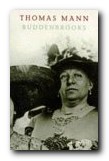 Buddenbrooks: The Decline of a Family
Buddenbrooks: The Decline of a Family
This lengthy saga of a prosperous Hanseatic commercial family and their gradual disintegration is also a portrayal of the transition from the stable bourgeois life of the nineteenth century to a modern uncertainty. It was Thomas Mann’s first novel – published when he was only twenty-five – and it announces themes he was to pursue for the rest of his life. The technique of leitmotif which Mann borrowed from Wagner is most apparent, as is his love of Schopenhauer, and the novel overall reads as a deeply philosophical epic. It brought Mann instant fame on its first publication.
![]() Buy the book at Amazon UK
Buy the book at Amazon UK
![]() Buy the book at Amazon US
Buy the book at Amazon US
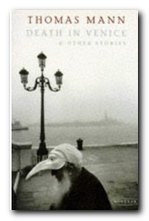 Death in Venice
Death in Venice
The title story of this collection is a classic novella – half way between a long story and a short novel. It’s a wonderfully condensed tale of the relationship between art and life, love and death. Venice provides the background for the story of a famous writer Gustav Von Aschenbach who departs from his usual strict routines, falls in love with a beautiful young boy, and gets caught up in a subtle downward spiral of self-indulgence – all set against a backdrop of the beautiful city of Venice, but which is in the grip of a plague. The unity of themes, form, and motifs are superbly realised – even though Mann wrote this when he was quite young.
![]() Buy the book at Amazon UK
Buy the book at Amazon UK
![]() Buy the book at Amazon US
Buy the book at Amazon US
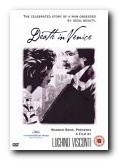 Death in Venice – video film adaptation
Death in Venice – video film adaptation
Luchiano Visconti produced a visually glamorous version of Mann’s novella which captures the original very faithfully. Shimmering scenes of the Venice lido are interspersed with menacing glimpses of the impending plague. The film is famous for two features – the spectacular use of the slowed-down version of the adagietto from Mahler’s fifth symphony as a sound track, and the outstanding performance of Dirk Bogard as the ageing Gustav von Aschenbach – one of his last and greatest screen performances. This is a visually spectacular piece of filming.
![]() Buy the DVD at Amazon UK
Buy the DVD at Amazon UK
![]() Buy the DVD at Amazon US
Buy the DVD at Amazon US
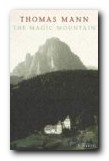 The Magic Mountain
The Magic Mountain
This is a curious but impressive novel, written on either side of the First World War. The setting is a sanatorium in the Alps – a community organized with exclusive reference to ill-health. There the characters discuss love, politics, and philosophy. Much of the novels ‘activity’ is intellectual debate between characters such as Settembrini and Naphta (who are said to represent Mann’s brother Heinrich and the Hungarian Marxist critic Georg Lukacs respectively). It’s an intellectual drama of the forces which play upon modern man. Don’t expect tension or plot in the conventional sense. The novel also marks a transition in Mann’s political philosophy – from a conservative to a more liberal ideology.
![]() Buy the book at Amazon UK
Buy the book at Amazon UK
![]() Buy the book at Amazon US
Buy the book at Amazon US
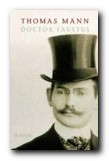 Doktor Faustus
Doktor Faustus
Full title – Doctor Faustus: The Life of the German Composer Adrian Leverkuhn as Told by a Friend. This is widely regarded as Thomas Mann’s masterpiece – a dense, intellectual, and metaphysical novel which is the biography of a famous composer Adrian Leverkuhn – a thinly disguised portrait of Arnold Schoenberg. His extraordinary career is loosely based on the Faust legend, and charted from his precocious childhood to his tragic death. His revelation of the horrifying price he had to pay for his achievement highlights Mann’s vast theme: the discord between genius and sanity. The story combines Mann’s serious concern for music with his political view of German society, which is shown sliding towards its own self-generated collapse in 1945.
![]() Buy the book at Amazon UK
Buy the book at Amazon UK
![]() Buy the book at Amazon US
Buy the book at Amazon US
 Mario and the Magician
Mario and the Magician
Using settings as varied as Germany, Italy, the Holy Land and the Far East, these stories explore a theme which always preoccupied Thomas Mann – “the two faces of things”. Written between 1918 and 1953, they offer an insight the development of his thought. The title story concerns a German family on holiday in Italy who fall under the hypnotic spell of a brutal magician. It is often seen as a warning against the seductive power of fascism.
![]() Buy the book at Amazon UK
Buy the book at Amazon UK
![]() Buy the book at Amazon US
Buy the book at Amazon US
© Roy Johnson 2004